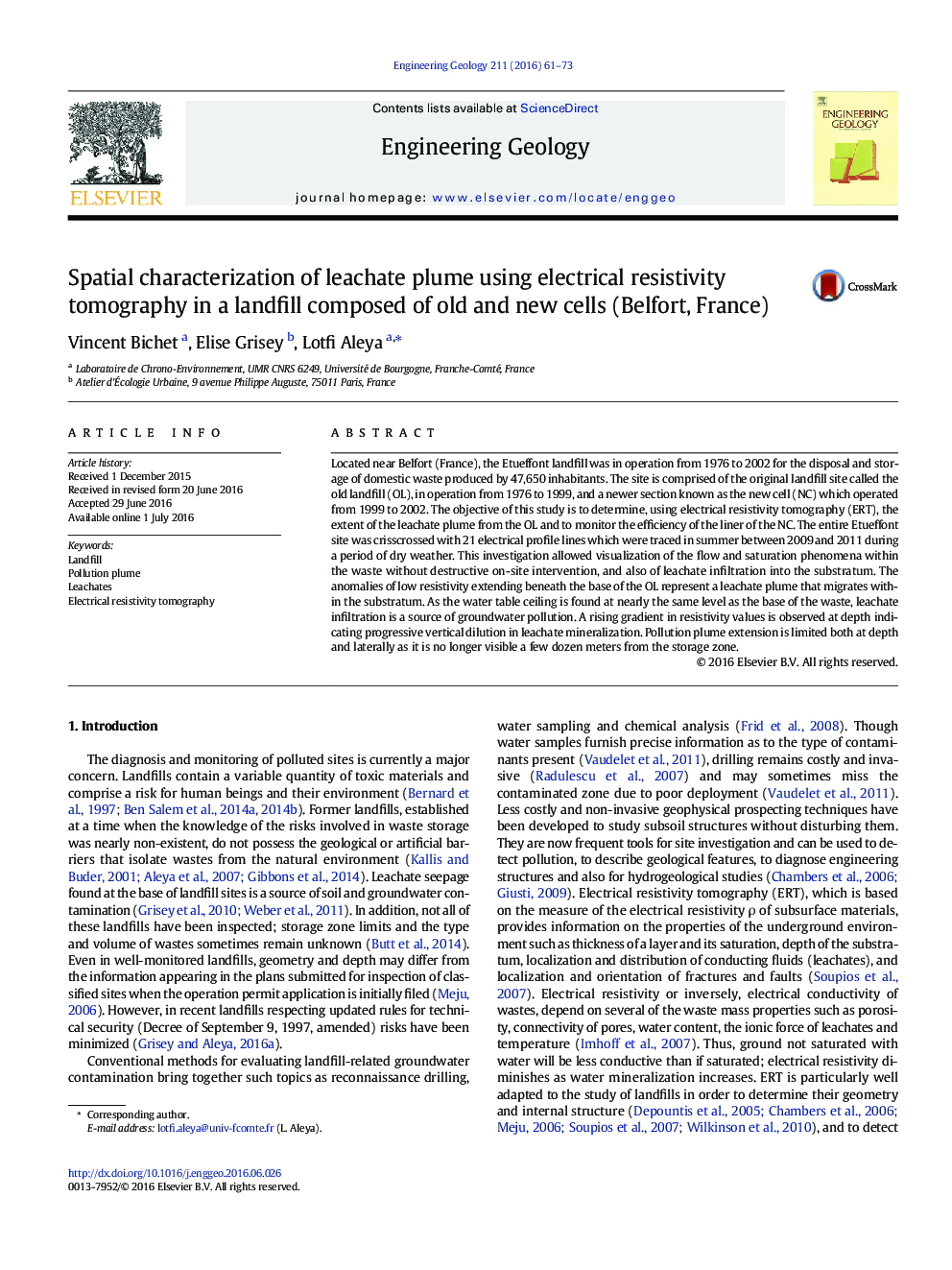| Article ID | Journal | Published Year | Pages | File Type |
|---|---|---|---|---|
| 4743092 | Engineering Geology | 2016 | 13 Pages |
•Leachate plume in a landfill detected by electrical resistivity tomography•Twenty one electrical profiles conducted in summer during sunny weather•Pollution plume limited both at depth and laterally•Pollution plume no longer visible a few dozen meters from the storage zone•Useful technique to ensure correct piezometer installation
Located near Belfort (France), the Etueffont landfill was in operation from 1976 to 2002 for the disposal and storage of domestic waste produced by 47,650 inhabitants. The site is comprised of the original landfill site called the old landfill (OL), in operation from 1976 to 1999, and a newer section known as the new cell (NC) which operated from 1999 to 2002. The objective of this study is to determine, using electrical resistivity tomography (ERT), the extent of the leachate plume from the OL and to monitor the efficiency of the liner of the NC. The entire Etueffont site was crisscrossed with 21 electrical profile lines which were traced in summer between 2009 and 2011 during a period of dry weather. This investigation allowed visualization of the flow and saturation phenomena within the waste without destructive on-site intervention, and also of leachate infiltration into the substratum. The anomalies of low resistivity extending beneath the base of the OL represent a leachate plume that migrates within the substratum. As the water table ceiling is found at nearly the same level as the base of the waste, leachate infiltration is a source of groundwater pollution. A rising gradient in resistivity values is observed at depth indicating progressive vertical dilution in leachate mineralization. Pollution plume extension is limited both at depth and laterally as it is no longer visible a few dozen meters from the storage zone.
